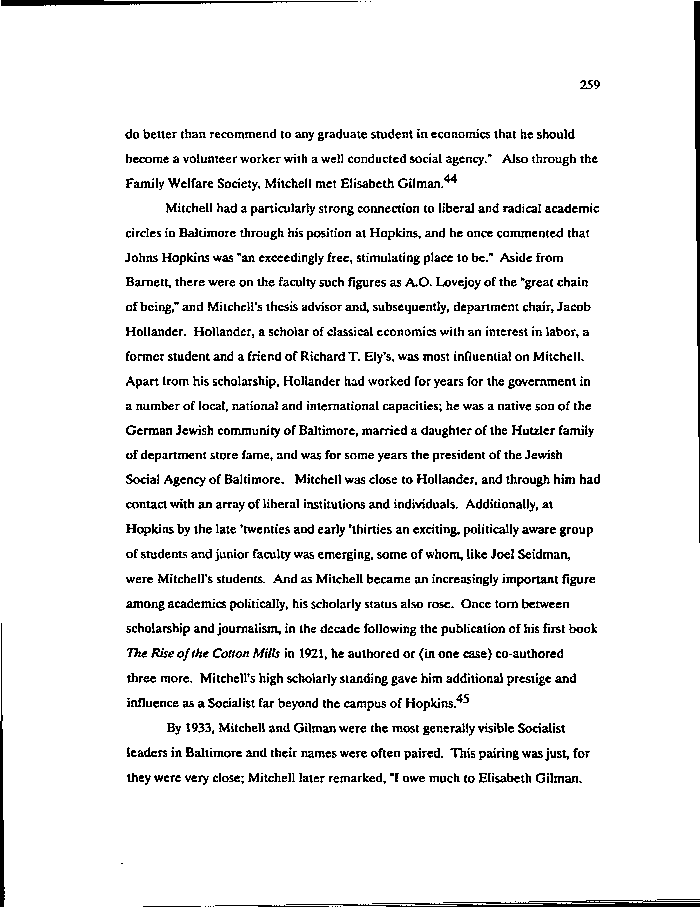|
259
do better than recommend to any graduate student in economics that he should
become a volunteer worker with a well conducted social agency." Also through the
Family Welfare Society, Mitchell met Elisabeth Oilman.
Mitchell had a particularly strong connection to liberal and radical academic
circles in Baltimore through his position at Hop kins, and he once commented that
Johns Hopkins was "an exceedingly free, stimulating place to be." Aside from
Barnett, there were on the faculty such figures as A.O. Lovejoy of the "great chain
of being," and Mitchell's thesis advisor and, subsequently, department chair, Jacob
Hollander. Hollander, a scholar of classical economics with an interest in labor, a
former student and a friend of Richard T. Ely's, was most influential on Mitchell.
Apart trom his scholarship, Hollander had worked for years for the government in
a number of local, national and international capacities; he was a native son of the
German Jewish community of Baltimore, married a daughter of the Hutzler family
of department store fame, and was for some years the president of the Jewish
Social Agency of Baltimore. Mitchell was close to Hollander, and through him had
contact with an array of liberal institutions and individuals. Additionally, at
Hopkins by the late 'twenties and early 'thirties an exciting, politically aware group
of students and junior faculty was emerging, some of whom, like Joel Seidman,
were Mitchell's students. And as Mitchell became an increasingly important figure
among academics politically, his scholarly status also rose. Once torn between
scholarship and journalism, in the decade following the publication of his first book
The Rise of the Cotton Mills in 1921, he authored or (in one case) co-authored
three more. Mitchell's high scholarly standing gave him additional prestige and
influence as a Socialist far beyond the campus of Hopkins.45
By 1933, Mitchell and Oilman were the most generally visible Socialist
leaders in Baltimore and their names were often paired. This pairing was just, for
they were very close; Mitchell later remarked, "I owe much to Elisabeth Oilman.
|

